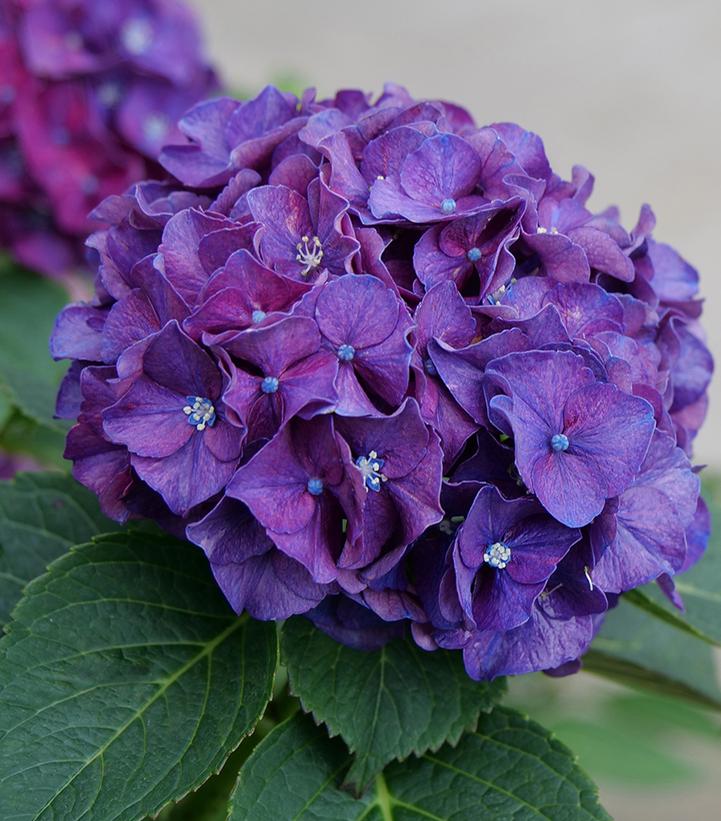« Previous Plant | Next Plant »
Hydrangea macrophylla Wee Bit Grumpy® ('Stragrum')
Wee Bit Grumpy® Bigleaf Hydrangea
- » Big, full blooms display a deep, moody color
- » Excellent performance in the landscape
- » Dark green glossy foliage
- » Continuous bloom or rebloomer
- » Salt tolerant

- Category:Shrub
- Breeder:Proven Winners
- Hardiness Zone:5-9
- Height:1-2 ft
- Spread:2-3 ft
- Bloom Color: Purple Shades, Red Shades
- Foliage Color: Green Shades
Don't be fooled by its curmudgeonly name: Wee Bit Grumpy hydrangea will put a smile on your face! Like its sister plant, Wee Bit Giddy hydrangea, it was selected for its combination of pure, intense, saturated flower color and outstanding landscape performance. And its color is really something you must see to believe: in acidic soils, its big, full blooms take on a moody, dramatic deep purple-blue. They appear amid a neat, tidy mound of compact foliage that resists disease and stands up better to cold weather than conventional hydrangeas.
Oh - and about that name! We know you're wondering: "Grumpy" was the working name that the breeder had sent the plant to us with. During its evaluation period, every time we noticed its glorious blooms and asked, "What is that?!", we'd look at the label and see "Grumpy." It made us laugh, and we thought you'd get a kick out of it, too
Foliage Color
| • | Green |
Programs
| • | Proven Winners |
Season of Interest (Flowering)
| • | Summer Bloomer |
Season of Interest (Foliage)
| • | Summer |
Habit
| • | Mounding |
Growing & Maintenance Tips for Hydrangea macrophylla Wee Bit Grumpy®
Soil and exposure: Big-leaf hydrangeas should be planted in moist but well-drained soil - they cannot tolerate wet conditions. It's a good idea to have a 2-3" layer of mulch in all climates. Plant with at least some sun each day; the hotter your climate, the more shade the plant can withstand.
Pruning: big-leaf hydrangeas cannot be pruned at any point in the year without negatively impacting the flowering. As such, it's best to avoid pruning this type of hydrangea altogether. If portions of the plant were damaged from winter weather, they can be removed in spring when it is clear where the new growth is emerging.
Fertilizing: The key to getting reblooming hydrangeas to produce new-wood flower buds is to keep them growing vigorously all summer. Hence, fertilizer can be beneficial. Apply a granular rose fertilizer in early spring, when the ground has thawed, and again in late spring. Never fertilize after late July; that can interfere with the plant going dormant.
Color: The "default" color for big-leaf hydrangeas tends to the pink/red tones, and that is the color they will display in neutral (pH 7.0) or higher soil. The soil must be acidic (at least 6.5 or so) for the blue color to develop, and aluminum, a naturally occurring soil mineral, must be present. If you are not satisfied with the flower color in your yard, get a soil test so that you know exactly what must be changed. We do not recommend applying any kind of treatment "just in case" - that's a waste of time and money, and could potentially lead to pollution or create inhospitable conditions in the soil.


